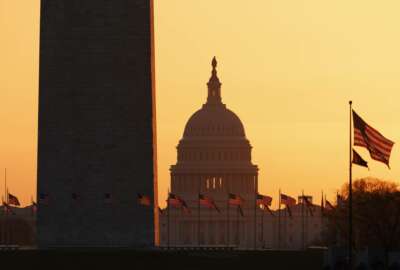
Budget breakdown: New laws to battle the coronavirus add billions to agencies’ coffers
President Donald Trump signed to supplemental spending bills into law over the last two weeks giving agencies billions of dollars in extra funding to help fight the...
Congress passed and President Donald Trump signed the Coronavirus Preparedness and Response Supplemental Appropriations Act of 2020 earlier this month, injecting more than $8.3 billion in emergency funding for federal agencies to respond to the coronavirus outbreak. And last night, the President signed the Families First Coronavirus Response Act in to law.
Both of these bills provide additional funding and requirements for agencies.
Lawmakers worked in record time to get these supplementals to the White House, and the administration submitted a request for an additional $45.8 billion in funding for an assortment of needs in fiscal 2020.
While Congress works on this next supplemental, Federal News Network dug through both bills and uncovered a few of the nuggets that agency and contractor executives should know about.
Coronavirus Preparedness and Response Supplemental Act
$3.1 billion
The Department of Health and Human Services’ topline funding increase for all things coronavirus, including “development of necessary countermeasures and vaccines, prioritizing platform-based technologies with U.S.-based manufacturing capabilities, and the purchase of vaccines, therapeutics, diagnostics, necessary medical supplies, medical surge capacity, and related administrative activities.”
$61 million
The amount the Food and Drug Administration is getting for salaries and expenses “to prevent, prepare for, and respond to coronavirus, domestically or internationally, including the development of necessary medical countermeasures and vaccines, advanced manufacturing for medical products, the monitoring of medical product supply chains, and related administrative activities.”
$20M
The increase in administrative expenses for the Small Business Administration’s disaster loan program.
30 days
This is the amount of time the Centers for Disease Control and Prevention has from the day this bill was signed into law to allocate $475 million to “grants to or cooperative agreements with States, localities, territories, tribes, tribal organizations, urban Indian health organizations, or health service providers to tribes, to carry out surveillance, epidemiology, laboratory capacity, infection control, mitigation, communications, and other preparedness and response activities.”
Sept. 30, 2024
The date when HHS can stop sending detailed spending plans to Congress every 60 days describing estimated personnel and administrative costs, as well as each new contract obligation worth more than $5 million.
$2M
The amount of extra funding the HHS inspector general’s office received for oversight of the agency’s portion of the supplemental, about $3.1 billion.
15 days
That’s how long the secretary of the State Department and the administrator of the United States Agency for International Development, following consultation with the heads of other relevant federal agencies, have to jointly submit to lawmakers a strategy to prevent, prepare for and respond to coronavirus abroad.
60 days
The number of days given for the Comptroller General and the committees on Appropriations to meet to discuss oversight of this law.
Families First Coronavirus Response Act
$15M
What Congress gave to the IRS for taxpayer services, which can be transferred into the operations support account.
$1B
The additional amount of money lawmakers gave HHS for the Public Health and Social Services Emergency Fund, which received a boost of $3.1 billion a few weeks ago.
$30M
The amount the Veterans Health Administration received for health services and items to deal with COVID-19.
30 days
That’s how long each agency receiving funding has to provide a report detailing their plans to use the money approved in this law, including estimated personnel and administrative costs, as well as the total amount of funding apportioned, allotted, obligated, and expended, to date. Then every 60 days thereafter, they should send an updated plan until all funds are expended or expired.
10 days
The number of days the bill requires many employers, including the federal government, to give as paid sick days should an employee come down with COVID-19, is caring for someone who is sick with the virus or is caring for family members because day care or other services are closed due to fears of coronavirus.
15 days
The number of days the Labor Department secretary has to issue guidelines to assist employers in calculating the amount of paid sick time employees are entitled to under the law.
$0
The amount of money federal civil service workers or Defense Department Tricare members have to pay for COVID-19 testing or any FDA approved treatments.
Copyright © 2025 Federal News Network. All rights reserved. This website is not intended for users located within the European Economic Area.
Jason Miller is executive editor of Federal News Network and directs news coverage on the people, policy and programs of the federal government.
Follow @jmillerWFED
Related Stories





